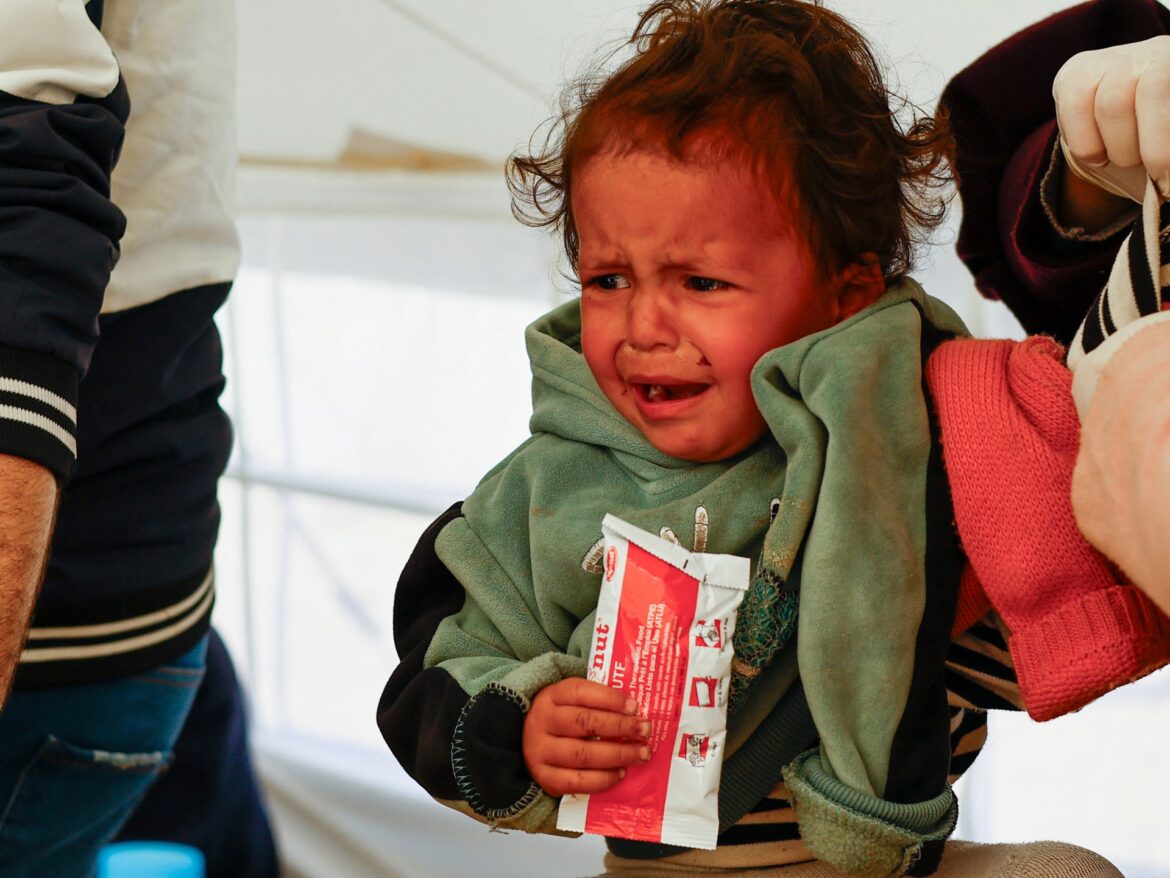A new report examines child food poverty around the world, with a particular focus on the “catastrophic impact” of the Israeli attack on Gaza.
Around 90 percent of Gaza’s children lack nutrition and face “serious” threats to their “survival, growth and development”, according to the UN children’s agency UNICEF.
A report published Thursday by UNICEF highlighted the “catastrophic impact” of the Israeli offensive on the enclave, which caused the “collapse” of the food and health systems, revealing that one in ten children survived on “two or fewer food groups.” per day” between December last year and April this year.
Describing “a staggering escalation in nutritional deprivation”, the report also highlights that 65 percent of children were fed “only one or no food groups” in February, a six-fold increase compared to the first half of December in Last year.
Israel says it places no limits on humanitarian supplies for civilians in Gaza and has blamed the United Nations for slow deliveries, saying its operations are ineffective.
But with pockets of famine emerging in Gaza, and some children dying of malnutrition and dehydration, even Israel’s most loyal allies have increased pressure on Israel to do more to let in food.
The UNICEF report said the military action, which destroyed food systems while imposing “severe restrictions on the importation of commercial goods and humanitarian supplies”, had “deprived millions of people of food, water and fuel they need.
Global deprivation
The report, Child Food Poverty: Nutrition Deprivation in Early Childhood, examines food poverty among the world’s youngest in 100 countries.
It warns that more than one in four children under the age of five live in “severe” food poverty, meaning more than 180 million people are experiencing negative impacts on their growth and development.
Of children living in extreme food poverty, 65 percent reside in just 20 countries. Around 64 million affected children are in South Asia, while 59 million are in sub-Saharan Africa.
Citing the situation in Gaza and Somalia, where more than half of children suffer from food poverty caused by conflict and natural disasters, the report highlights how quickly children are exposed “to the risk of life-threatening malnutrition.”
“It’s shocking in this day and age when we know what needs to be done,” Harriet Torlesse, one of the report’s lead writers, told the AFP news agency.
One in four children worldwide suffer from severe food poverty, with lifelong consequences for their health and development.
This is what we must do now.
– UNICEF (@UNICEF) June 6, 2024
To meet the minimum dietary diversity necessary for healthy development, children must consume foods from at least five of the eight food groups defined by a dietary diversity score used by UNICEF and the World Health Organization (WHO). ).
These include breast milk, eggs, dairy products, and meat, poultry, and fish, among other groups.
Children who consume just two food groups a day are up to 50 percent more likely to suffer from severe forms of malnutrition, UNICEF Director Catherine Russell said in a statement accompanying the report.
Malnutrition can lead to wasting, a state of abnormal thinness that can be fatal. Even if these children survive and grow up, “they certainly don’t thrive.” So they do less well at school,” explains Torlesse.
“When they are adults, it is more difficult for them to earn a decent income, which reverses the cycle of poverty from one generation to the next,” she said.
Worldwide, the agency noted “slow progress over the past decade” in tackling the crisis and called for better social services and humanitarian aid for the most vulnerable children.



